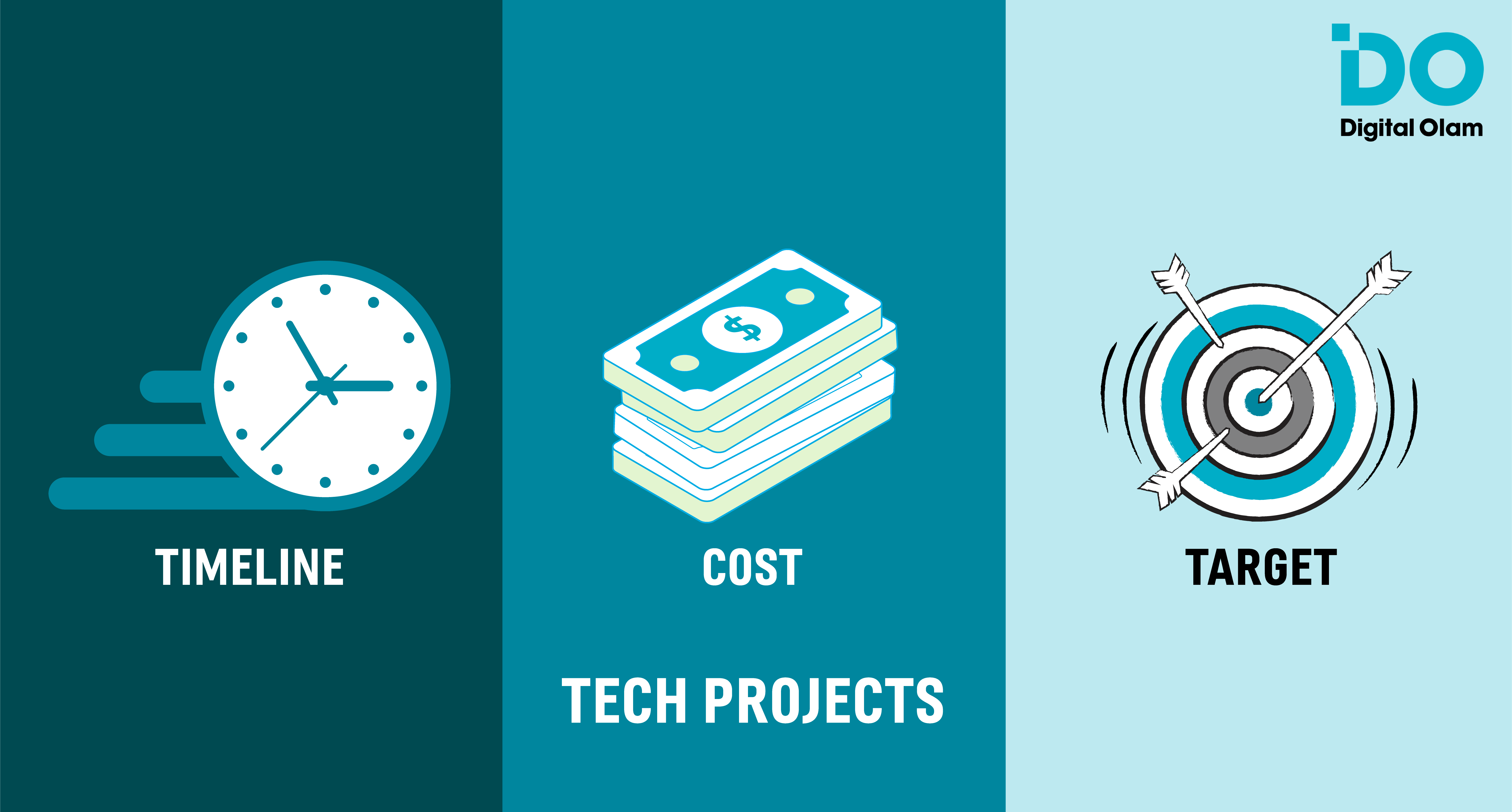On time, on budget, real value
One common challenge that nearly all technology projects (and building or infrastructure projects) face is how to stay on time and on budget. This is especially the case, when there is a level of uncertainty involved or exploration required. In organisations across the world it is estimated that 45 percent of technology projects are over budget and 7 percent over time, while delivering 56 per cent less value than predicted. Luckily Digital Olam’s stats make for better reading – but those challenges are universal.
So, what are Olam’s digital tech teams’ top tips?
1. Plan for both failure and success
When preparing to begin a technology project we see where we can use standardised proven software and existing Olam products to reduce risk. We also spend intensive time with end users to shape solutions and look to use proven technologies and tools. Nonetheless, when trying to prepare reliable plans and estimates, we consider:
- Risks and worst-case scenarios, thinking ahead as to how we might get around them
- Hidden costs and constraints, e.g., whether there is a dependency on 3rd party providers for any input to the solution
- Generous time for testing, training and updating processes/procedures
- On-the-ground research early to fit the solution to on-the-ground usage
2. Understand what is behind the brief
Before beginning work on a brief, our project managers and developers are tasked with understanding “the big picture” from the customer. We work with the product owners, or directly with the end customers to establish a clear view of the project’s strategic value—we appreciate that normally the technology delivery must serve that. By focusing on clear business objectives, we can help the customer and project owner make quick decisions to avoid overruns and cut unnecessary effort. Whilst looking to achieve a stable minimised project scope that major stakeholders are aligned behind, we also have processes in place to cater for change requests as efficiently as possible.
3. Short delivery cycles and rigorous quality checks
Our very set-up is Agile (specifically using Scrum) meaning our integrated product owner (representing the business) and technology delivery teams that work on an end-to-end basis in their respective work streams leave very little scope for wastage. The same team members normally participate from the beginning of a project to end—from defining requirements to testing. This means maximum efficiency and fast delivery.
Clear quality criteria that are universal to all digital tech products enshrined online and in a personal printed handbook for every member of staff, ensure strong stage gates to a high-quality end- product. This includes a dedicated Quality Analysis / testing team in the department and specialist from that department embedded on each project.
At the same time, we have rigorous testing and rollout plans with targets around test cases carried out, fixed critical defects, verifying fixes, unit testing and integration testing, to ensure quality.
4. Review and rescope
Time is often lost, and budget wasted on technology projects when there is too much focus on technology delivery targets and issues rather than the end goal. Achieving a certain technology outcome at all costs can make project budgets rocket trying to achieve perfection. However, we work with product owners at key regular milestones in each project to rescope and simplify a project’s technical requirements to cut out waste and what is called “gold-plating” – meaning over finishing something. In these sessions, we look to re-focus on the technology features items that will give the best business value.
5. Make use of experience
The easiest way to reduce overruns (normally caused by uncertainties and unforeseen circumstances) is to have experienced tech delivery project managers. Which is why we focus on experience and technical nous in the project managers we hire, alongside highly experienced and motivated specialist developers and business analysts. Where we may lack experience, we transparently bring in best in class external resources in a sustainable balance with the internal team to maintain speed and know-how.
While it is extremely important to stay on time and on budget the key is that business teams and technology teams work closely together in a determined endeavor on each project to deliver value.


